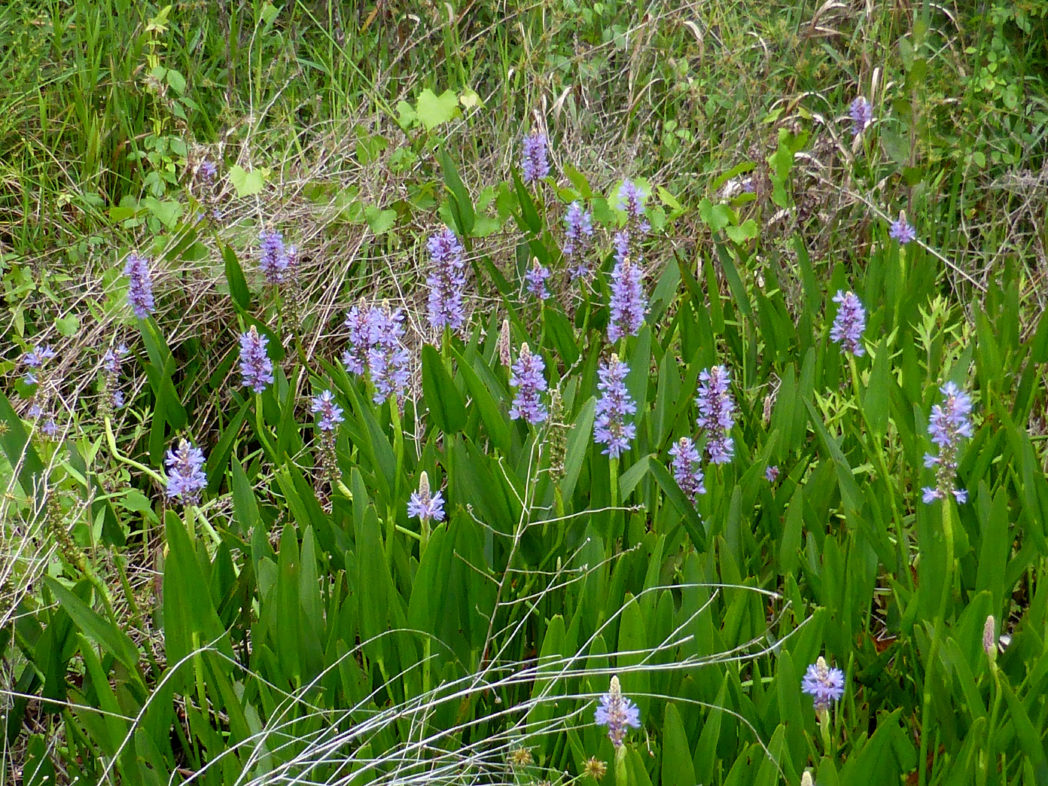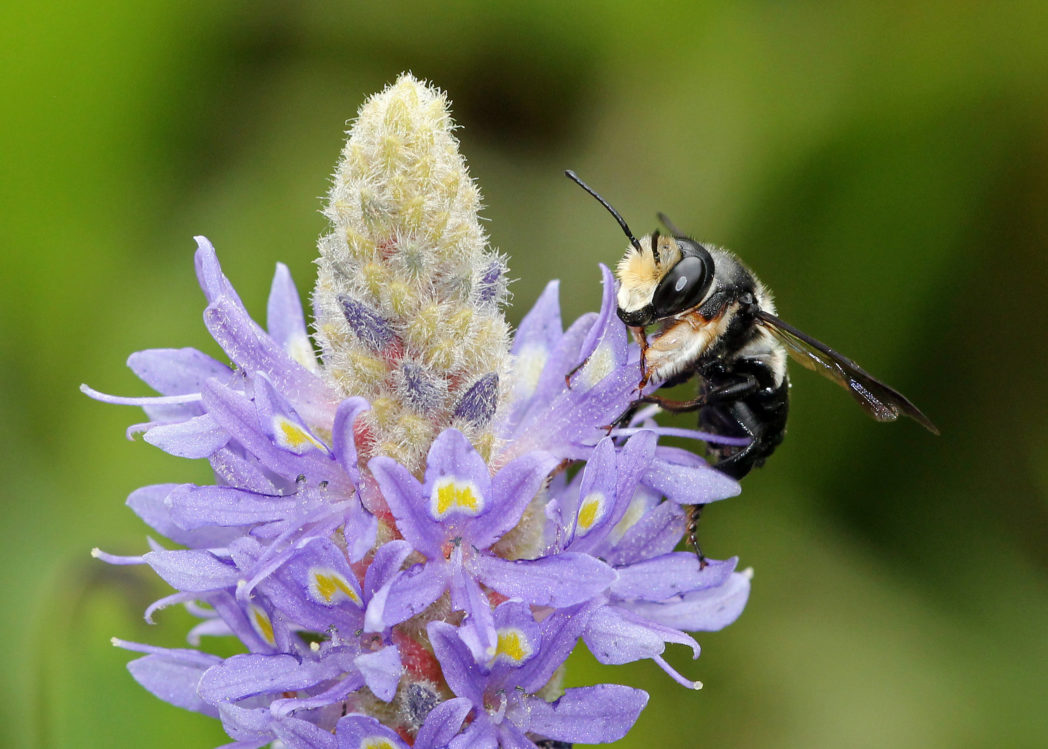Pickerelweed
Pictured above: Leafcutter bee (Megachile sp.) on Pickerelweed (Pontederia cordata). Photo by Mary Keim. Click on terms for botanical definitions. View post as a PDF.
Pickerelweed is a long-lived, perennial aquatic wildflower that occurs naturally in open, aquatic habitats such as pond, lake or river edges, marshes and swamps. It typically blooms in spring through summer and is pollinated primarily by bees, but is visited by many butterflies and other insects. Its seeds are eaten by birds. Ducks are known to eat the entire plant.
Pickerelweed’s conspicuous blooms are born in erect, showy spikes. Flowers are tubular with deep purplish-blue petals that often bear yellow and white markings that may serve as nectar guides for bees. Flower spikes extend above all but one leaf. Leaves are sagittate with a long, tapering blade and a cordate base (hence the species name cordata). They are dark green and alternately arranged. The fruit is an achene that bears a single inconspicuous seed.
Pickerelweed seeds, stalks and leaves are edible to humans. Seeds can be eaten raw, boiled or roasted. Young leaves and stalks can be eaten raw or boiled.

Family: Pontederiaceae
Native range: Nearly throughout Florida
To see where natural populations of pickerelweed have been vouchered, visit www.florida.plantatlas.usf.edu.
Lifespan: Perennial
Soil: Inundated to saturated soils
Exposure: Full sun to partial shade
Growth habit: 2–4’
Propagation: Seed, division
Florida regions of landscape suitability: North, Central, South
Garden tips: Pickerelweed is great for water gardens as well as pond edges and drainage swales, where it can also help with soil stabilization. It flowers best if grown in full sun. It is fast-growing and spreads easily on its own by underground rhizomes, forming large colonies if not maintained.
Pickerelweed is often available at nurseries that specialize in native plants. Visit PlantRealFlorida.org to find a native nursery on your area.
Learn more about Pickerelweed from the Florida Native Plant Society and the Institute for Regional Conservation.

